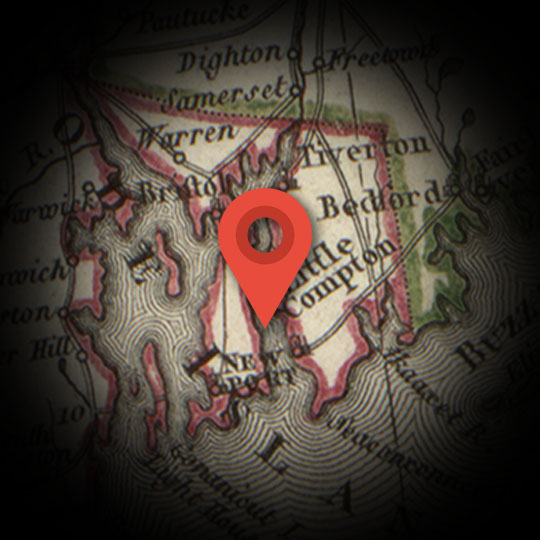NEWPORT
Explore
War can shape the destiny of cities. Boston and Philadelphia were the premiere urban cores of America. Then, during the French and Indian War, British Crown policies shifted the economically crucial shipment of war materiel to New York, and helped set it on the path to commercial and cultural primacy.
Something similar happened with Newport, Rhode Island (and Providence Plantations). A flourishing shipbuilding center and trading hub for rum, molasses, and enslaved people, Newport fell to British occupation in 1776. Patriot Americans by necessity were forced to remove to Providence. With the eventual American and French victory, Providence managed to keep its new, elevated status—and it went on to become the state’s capital and first city.
Both at sea and on land, Newport was fought over heatedly during the American Revolution. The French, under the General Comte de Rochambeau, landed 5,300 French troops at approaches to Newport in July, 1780, and finally (after previous attempts) succeeded in exerting enough pressure to make the British evacuate.
George Washington, who had lost New York to the invading forces in 1776, could not kick the dream of winning the war by launching a massive counterstrike against the enemy-occupied island city. Having a French naval fleet based at nearby Newport Harbor would be key to this potentially game-changing prize.
Later in the war, Washington was plagued by another grievance: the traitor Benedict Arnold, who had been given command of American loyalists and some foreign troops, and dispatched to make war on Washington’s home state of Virginia. To say Washington was keen to have the French fleet at Newport sail against and smash Arnold’s redoubt at Portsmouth, Virginia, would be putting it mildly.
The French were not sanguine to this plan, initially. But when Washington heard Rochambeau had been ordered to take this exact course of action, Washington immediately began planning a trip to Newport to rendezvous with Rochambeau and aid with the operation planning.
Alexander Hamilton’s education in the Caribbean islands of Nevis and St. Croix had blessed him with literacy in the French language. Since the forging of the Franco-American alliance, this linguistic capability of Hamilton’s was of sterling value to Washington and the war effort generally. (It also enhanced Hamilton’s friendship with the Marquis de Lafayette, who had participated in the alliance’s earlier, unsuccessful attempts to take Newport from the British).
It was a given, then, that Hamilton—who was effectively Washington’s chief of staff (though never given that name)—would accompany his commander to Newport.
The trip, first delayed by winter weather and other eventualities, was a three-and-a—half-day galloping rush from the Hudson Valley to the coast of Southern New England. Hamilton had just recently been married, and must still have been smarting from his fateful falling out with the sometimes tempestuous Washington at Morristown, New Jersey, earlier in the winter. They arrived in Newport by March 7, 1781.
The French prepared to receive Washington with an ornate circus of martial pomp: music, cannonades, dances, dinners, processions of youths with candles and torches. Washington was flattered, but desperate to get down to business. Unfortunately, diplomatic exigencies left him no choice but to endure it. All the while, internally, he was piping with impatience, aggrieved that the French preferred theatrics of honor rather than immediately taking advantage of favorable winds and sailing to Virginia at once. It took days for the fleet to finally disembark, which it did only haltingly.
To Washington’s bitter consternation, the French encountered the British fleet at sea and, after an indecisive skirmish, decided to return to Newport. Benedict Arnold seemed unstoppable as his troops went on to burn the capital of Virginia, Richmond, and send its governor Thomas Jefferson scurrying to hide in a wooded hill outside one of his lesser-known plantations, earning Jefferson the moniker “the Coward of Carter’s Mountain.”

TIME FRAME:
March 7-11, 1801
